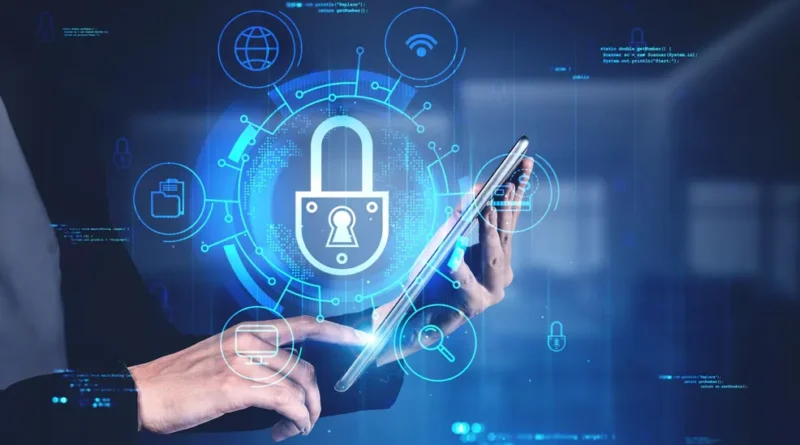The Future Of Cybersecurity: Navigating Threats And Ensuring Digital Safety
In today’s increasingly digital world, cybersecurity has become a top priority for individuals, organizations, and governments alike. With the rise of advanced technologies, the surge in online activity, and the growing sophistication of cyber threats, ensuring digital safety is no longer a luxury but a necessity. The future of cybersecurity is rapidly evolving to address new challenges and protect sensitive information from malicious actors who seek to exploit vulnerabilities. In this article, we’ll explore the current state of cybersecurity, the emerging trends and technologies shaping its future, and strategies for navigating the ever-evolving landscape of digital threats.
1. The Current State of Cybersecurity
Cybersecurity is an ongoing battle against cybercriminals who are continuously developing new tactics to infiltrate systems, steal data, and disrupt services. As we transition into a more connected, data-driven world, both individuals and organizations face a growing array of threats:
Types of Cyber Threats
- Phishing: Cybercriminals use fraudulent emails or websites to trick individuals into revealing sensitive information such as passwords, credit card details, or social security numbers.
- Ransomware: Malicious software that encrypts a user’s data and demands payment, usually in cryptocurrency, for the decryption key.
- Malware: Software designed to disrupt, damage, or gain unauthorized access to computer systems, including viruses, worms, and Trojans.
- Denial of Service (DoS) Attacks: Attackers flood a system or network with excessive traffic to overwhelm it, rendering it inaccessible to legitimate users.
- Insider Threats: Employees or contractors with access to sensitive data who intentionally or unintentionally leak or misuse it.
The rise of remote work, cloud storage, and the Internet of Things (IoT) has expanded the attack surface for cybercriminals, making it more difficult to secure networks and data.
2. The Future of Cybersecurity: Trends to Watch
AI and Machine Learning in Cybersecurity
Artificial Intelligence (AI) and Machine Learning (ML) are transforming cybersecurity by enabling systems to identify and respond to threats faster and more accurately than ever before. These technologies allow for the creation of intelligent security systems that can detect abnormal behavior, flag potential threats, and automatically respond to them in real time.
- Automated Threat Detection: AI algorithms can analyze massive volumes of data to detect subtle patterns that may indicate a security breach. This speeds up threat identification and response, helping organizations stay ahead of cybercriminals.
- Predictive Analytics: Machine learning can predict future threats based on historical data, allowing companies to proactively address vulnerabilities before they are exploited.
- Behavioral Analysis: AI can continuously monitor user behavior and network traffic for deviations from normal patterns, helping detect insider threats or compromised accounts.
Zero Trust Architecture (ZTA)
Traditional network security models rely on a perimeter defense approach—once inside the network, users or devices are trusted. However, the rise of remote work, cloud services, and interconnected devices has challenged this model. Enter Zero Trust Architecture (ZTA), a security approach that assumes no one, whether inside or outside the network, is trustworthy by default.
- Continuous Authentication: ZTA requires continuous verification of users and devices, ensuring they meet security requirements before granting access to any resources.
- Least Privilege Access: Users are given the minimum level of access necessary to perform their tasks, reducing the potential impact of a breach.
- Micro-Segmentation: Networks are divided into smaller segments, making it harder for cybercriminals to move laterally once they gain access to one part of the network.
This approach reduces the risk of unauthorized access and limits the scope of potential damage from cyberattacks.
Quantum Computing and Cybersecurity
While quantum computing holds the potential to revolutionize many fields, it also presents a unique challenge to cybersecurity. Quantum computers can solve complex problems exponentially faster than classical computers, potentially breaking traditional encryption methods like RSA and ECC (Elliptic Curve Cryptography).
- Post-Quantum Cryptography (PQC): As quantum computers advance, researchers are working on developing cryptographic algorithms resistant to quantum attacks. PQC aims to ensure data remains secure even in the age of quantum computing.
- Quantum Key Distribution (QKD): This method uses quantum mechanics to create unbreakable encryption keys. It’s considered a future-proof way to secure communication channels, but the technology is still in its infancy.
As quantum computing continues to evolve, cybersecurity must adapt to ensure data remains safe in the quantum era.
Cloud Security and Data Privacy
As more businesses move their operations to the cloud, securing cloud environments becomes an essential aspect of cybersecurity. Cloud security challenges include misconfigurations, insecure APIs, and inadequate access control.
- Cloud Security Posture Management (CSPM): CSPM solutions continuously monitor cloud environments for misconfigurations, vulnerabilities, and compliance issues, helping organizations secure their cloud infrastructure.
- Data Privacy Regulations: With increasing concerns about data privacy, governments around the world are implementing stricter regulations, such as the General Data Protection Regulation (GDPR) in the EU and the California Consumer Privacy Act (CCPA) in the US.
- End-to-End Encryption: Organizations are increasingly using encryption to protect data both at rest and in transit, ensuring that sensitive information is secure from unauthorized access.
Cloud security will continue to evolve as more organizations embrace hybrid and multi-cloud environments, making it critical for businesses to stay ahead of potential risks.
IoT Security
The Internet of Things (IoT) has introduced new vulnerabilities, as more devices are connected to the internet, creating more entry points for attackers. IoT security focuses on securing devices such as smart home systems, wearables, and industrial machines.
- Device Authentication: Ensuring that only authorized devices are allowed to connect to networks and communicate with other devices.
- Data Encryption: Encrypting data generated by IoT devices to prevent interception or manipulation.
- Firmware Updates: Regularly updating the firmware on IoT devices to patch security vulnerabilities and enhance protection.
As IoT devices proliferate, organizations and individuals must be vigilant about securing these connected devices to prevent cyber threats.
3. Strategies for Navigating Cybersecurity Threats
1. Regular Security Audits
Conducting regular security audits is essential for identifying vulnerabilities and ensuring that your cybersecurity measures are effective. This includes reviewing security policies, testing network defenses, and evaluating the security of applications and devices.
2. Employee Training and Awareness
Employees are often the weakest link in the cybersecurity chain. Comprehensive cybersecurity training can help employees recognize phishing attempts, understand the importance of strong passwords, and follow safe online practices. Regular awareness campaigns will reinforce good habits and reduce the risk of human error.
3. Strong Password Policies and Multi-Factor Authentication (MFA)
Using strong, unique passwords for each account and enabling multi-factor authentication (MFA) significantly reduces the likelihood of unauthorized access. MFA requires users to provide multiple forms of identification (such as a password and a fingerprint) before granting access.
4. Data Backup and Disaster Recovery Plans
Regularly backing up critical data and having a disaster recovery plan in place ensures that your organization can quickly recover from a ransomware attack or data breach. Cloud backups and offsite storage can help mitigate the impact of a cyberattack and minimize downtime.
5. Collaboration with Cybersecurity Experts
As cyber threats continue to grow in sophistication, it’s important to collaborate with cybersecurity experts, either through in-house teams or third-party vendors. These professionals can provide insights into emerging threats and help organizations implement advanced security measures.
Conclusion
The future of cybersecurity is both exciting and challenging. With emerging technologies like AI, quantum computing, and blockchain providing new opportunities for securing digital systems, businesses and individuals must also be aware of evolving threats and develop proactive strategies to defend against them. The key to navigating the cybersecurity landscape is staying informed, adopting innovative security solutions, and ensuring that everyone—employees, organizations, and governments—works together to create a safer digital world.
By embracing new technologies, implementing strong security practices, and staying ahead of cyber threats, we can ensure that digital safety remains a top priority in the years to come.
Key Takeaways:
- AI and Machine Learning are transforming cybersecurity by enabling faster and more accurate threat detection and response.
- Zero Trust Architecture (ZTA) is becoming essential in protecting networks by requiring continuous verification and limiting access.
- Quantum Computing poses new challenges to cybersecurity, but Post-Quantum Cryptography (PQC) and Quantum Key Distribution (QKD) offer potential solutions.
- Cloud Security is critical as more businesses move their operations to the cloud, necessitating enhanced protection for sensitive data.
- IoT Security is a growing concern, and ensuring the security of connected devices is essential in preventing attacks.

